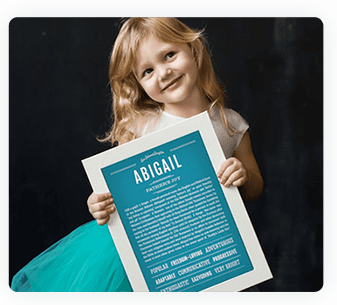Literary Characters
OF THE BABY NAME ROGER
Roger Chillingworth is a major character in Nathaniel Hawthorne’s 1850 classic, The Scarlet Letter. In the Old World, Roger Prynne sends his much younger wife, Hester, ahead of him to the New World, while he stays behind to finish up business. Being delayed by several misfortunes over the period of two years, he arrives in Massachusetts, only to find that she has obviously betrayed him, and has born a child in that time. He changes his name to Roger Chillingworth, assumes the role of community doctor, and begins his years-long search for Hester’s partner-in-crime, whose name she will not reveal. Thus he morphs from a respectable businessman and loving husband into the very symbol of evil, as he ages and becomes more and more deformed as the thirst for vengeance drives him further and further astray. Roger Chillingworth has long been heralded as one of literature’s all time bad guys, but in our estimation, he really got a bad deal. He, after all, is not the one who was the adulterer. He is not the one who dallied with another man’s wife and sired a child out of wedlock. He is not the one who keeps that secret for years and years. Indeed, Roger makes it his life’s purpose to find out and punish his enemy, and becomes a dark force. Nonetheless, when Hester’s erstwhile lover finally makes himself known (on his proverbial deathbed, we might add), Roger actually repents his earlier trespasses and goes to his own eternal hereafter in peace, having repented and having left his considerable fortune to Hester’s daughter, Pearl. We’ll call it a draw, and assume that he finds a better deal in the next world.
Roger Hamley is an important character in Elizabeth Gaskell’s novel, Wives and Daughters, first published in serial form between 1864 and 1866. Roger is the younger son of the Squire of Hamley Hall, where the heroine, young Molly Gibson, a widowed doctor’s daughter, stays for a while. He becomes an intellectual mentor to her, and, when Molly’s father is entering into a remarriage about which she is concerned, Roger urges her to think of others more than of herself, advice which young Molly takes to heart. She also finds herself falling in love with him, all the while knowing that she is beneath his station in life. Roger, although the younger son, of whom less is expected than the elder, actually out-performs his brother, who is profligate and deceptive (one little case in point: a secret lower class wife and child in a little hideaway cottage). Roger excels at university and goes on to join a two year scientific expedition to Africa. Before he goes, however, he asks Molly’s step-sister to marry him upon his return. Steadfast little Molly must swallow her heartache, which she does, due to all that excellent mentoring. The step-sister rides out a scandal, marries someone else, and leaves the field open for Molly and Roger. Roger now realizes he has always loved Molly but feels unworthy of her, after having squandered his affections on another. He confides his feelings to Molly’s father, who heartily approves of his intentions, but Roger, alas, who is slated to return to Africa, falls ill with scarlet fever before he can speak to Molly – and hereupon Mrs. Gaskell died! Yes, that’s right, the authoress. Well, others, including the BBC, finished it for her, but we’re going to let you do the same.
Roger Rabbit is the title character in Robert Zemeckis’ hilariously enchanting 1988 live action/animated fantasy, Who Framed Roger Rabbit, itself based on Gary K. Wolf’s 1981 novel , Who Censored Roger Rabbit?. Roger, a star at Maroon Cartoon Studios, suspects his wife, femme-fatale “toon”, Jessica, is having an affair with the studio mogul, the very human R. K. Maroon, and hires (human) private detective, Eddie Valiant, to check out his suspicions. Then Maroon turns up dead – whodunit? Featuring “guest appearances” from the likes of Bugs Bunny to Betty Boop, this romp pays tribute to the film noir of the forties, and to one of its later day adulators, Chinatown. (Eddie Valiant, in the course of his investigation, is required to revisit – gasp – Toontown!) Roger Rabbit is a delightful fellow with a knack for saying and doing the wrong thing at the wrong time, but we root for him all along, because he’s just a regular fellow, a good guy, and above all, a decent toon.



